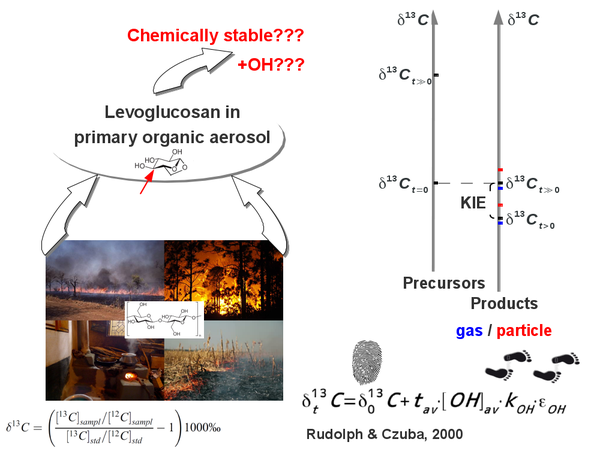IRMS - Isotope Mass Spectrometry
Compound specific measurements are carried out by using TD-GC-IRMS (Thermal Desorption - Gas Chromatography - Isotope Ratio Mass Spectrometry). The main goal is to identify and quantify the sources and the atmospheric chemical processing of volatile organic compounds (VOC) as well as of organic aerosols.




